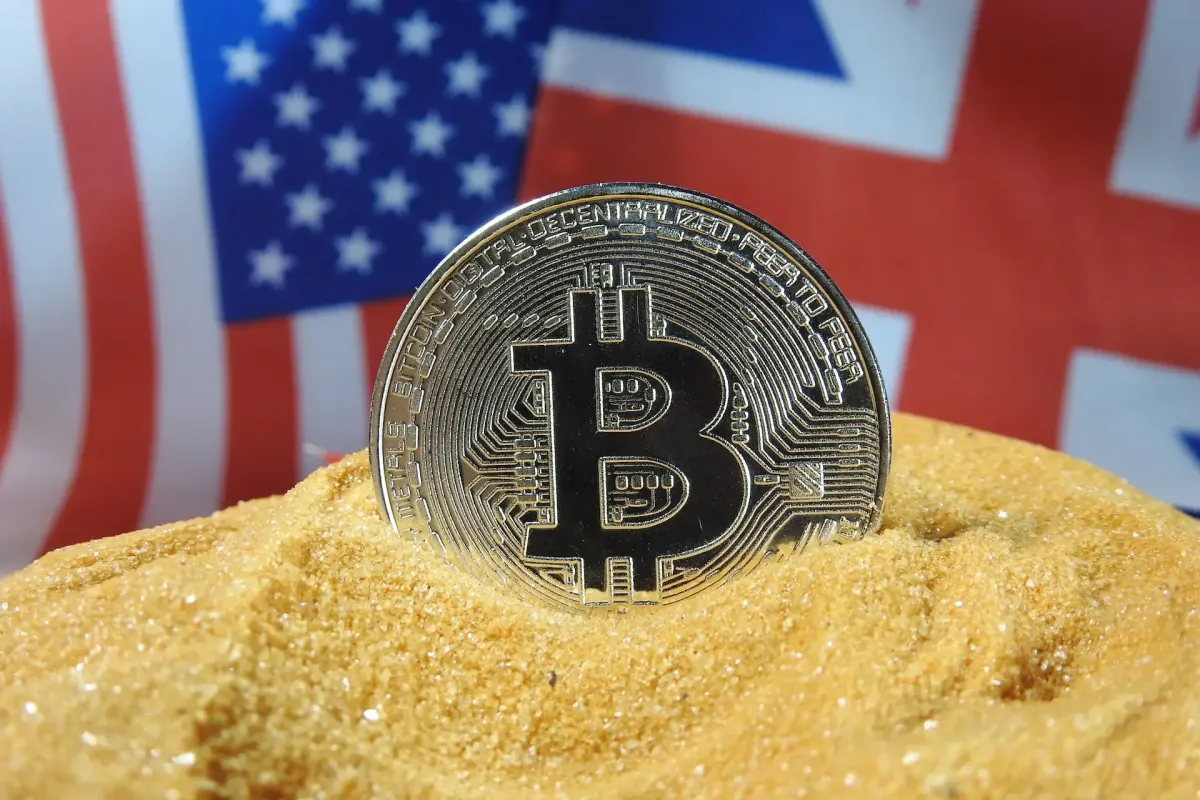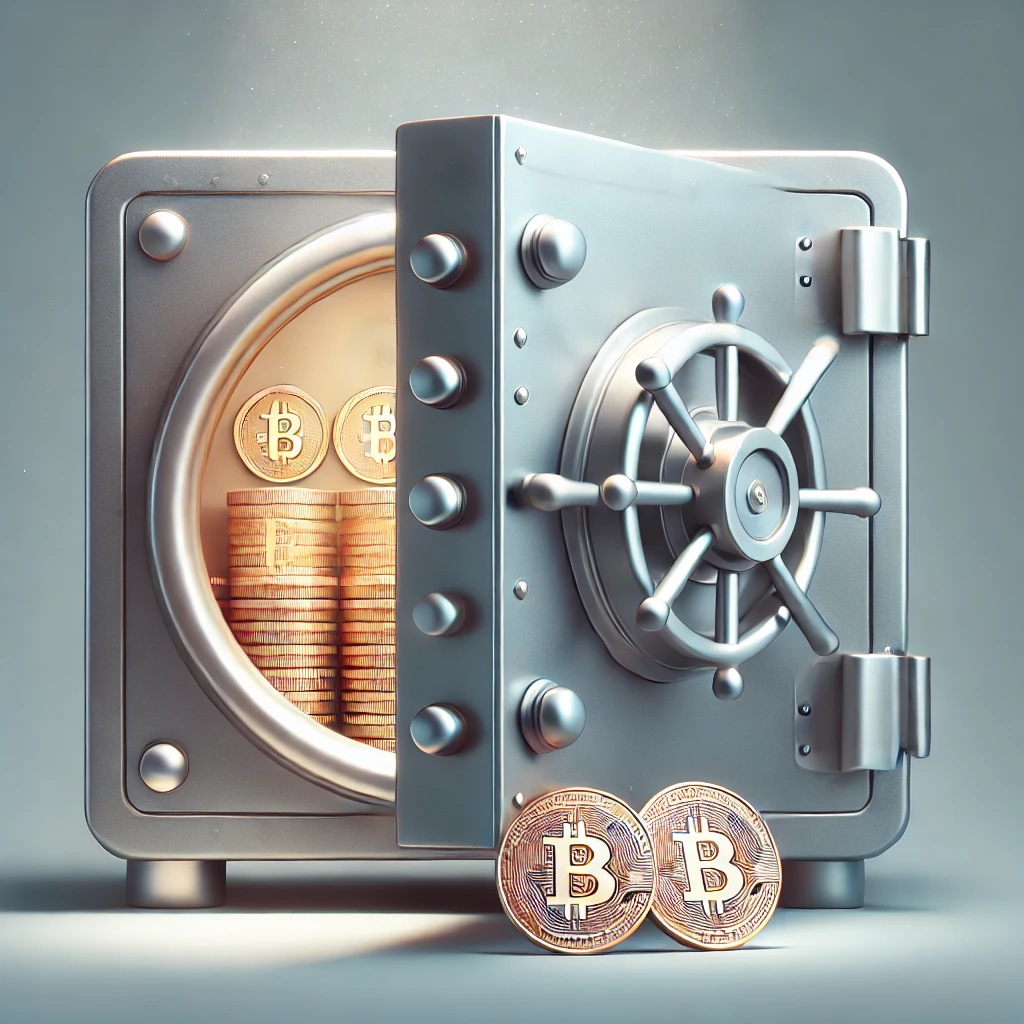
The Crypto Strategic Reserve: Why Anything but Bitcoin is a Mistake
In March 2025, President Donald Trump announced the creation of a U.S. "Crypto Strategic Reserve," proposing the inclusion of various digital assets such as Ethereum (ETH), Ripple (XRP), Solana (SOL), Cardano (ADA) and Bitcoin (BTC). While this initiative aims to bolster the nation's position in the burgeoning crypto industry, the inclusion of altcoins alongside Bitcoin raises significant concerns from a sound money perspective.
Altcoins: No Better Than U.S. Tech Stocks
The rationale for incorporating altcoins into the reserve hinges on their U.S. origins and perceived innovation. However, this perspective overlooks the fundamental similarities between altcoins and traditional tech stocks. Both are typically created by centralized entities, have identifiable founders who benefit from their issuance, and rely on ongoing speculation and development to maintain value. Unlike Bitcoin, which operates without central control and follows a predictable issuance schedule, these projects resemble equity instruments rather than decentralized assets.
Just like shares in a company, altcoins often have corporate governance models where decisions about supply issuance, network updates, and fee structures are controlled by a select group of stakeholders. This makes them susceptible to regulatory intervention, internal conflicts, and financial mismanagement. Moreover, the valuation of altcoins is often driven by hype cycles, venture capital interests, and speculative trading rather than genuine adoption or utility. By contrast, Bitcoin has no CEO, no marketing department, and no venture capital backers influencing its monetary policy—its value is purely derived from its decentralized security, scarcity, and network effect (Bitcoin Magazine).
The reality is that most if not all altcoins function more like risky tech investments rather than sound money. Their success depends on continued investor interest and corporate leadership, much like stocks in a speculative growth sector. If the U.S. government is serious about backing a reliable, long-term digital asset in its strategic reserve, it must separate Bitcoin from the rest of the "crypto" market.
Lobbyists and the Misguided Nationalist Argument
The push to include altcoins in the strategic reserve is partly driven by political lobbying efforts that frame them as patriotic investments. Proponents argue that fostering U.S.-founded crypto projects strengthens national economic security and prevents foreign dominance in the blockchain industry. The allure of supporting "homegrown innovation" is persuasive, particularly in a climate where technological leadership is equated with geopolitical influence. However, this argument ignores the fundamental principles of sound money and the risks associated with centralization.
The lobbying behind this initiative primarily comes from influential venture capital firms and blockchain companies that stand to benefit from government adoption of their tokens. These entities are heavily invested in altcoins and have spent significant resources influencing policymakers to recognize their projects as legitimate alternatives to Bitcoin. Yet, their underlying motivation is financial gain rather than long-term monetary stability. Unlike Bitcoin, which emerged organically and without a central controlling entity, most altcoins were launched through Initial Coin Offerings (ICOs) or venture capital backing, creating a built-in concentration of wealth and control.
Moreover, by favoring certain blockchain projects based on their U.S. origins rather than their monetary properties, the government risks distorting the market and fostering regulatory capture. Instead of supporting an asset with verifiable scarcity and a robust security model, this approach would inject further volatility into the financial system by relying on assets that lack Bitcoin’s decentralized structure. If the goal of a strategic reserve is to ensure resilience against economic instability, it makes little sense to include tokens that are susceptible to governance changes, technological vulnerabilities, or outright manipulation.
Premines, ICOs, and Unpredictable Supply Schedules
A critical issue with altcoins is their deviation from the monetary properties that make Bitcoin a viable strategic asset. Many of these projects had premined allocations granted to founders and early investors. For example, Ethereum launched with a significant pre-sale that benefited insiders before the public could participate (CoinCodex). Solana's token supply is controlled by a small group of developers who can adjust parameters at will. Ripple (XRP) has a substantial portion of its tokens in escrow, controlled by a central entity.
Unlike Bitcoin, these assets do not have a verifiable, fixed supply cap. Bitcoin's 21 million hard cap is enforced by its decentralized network, ensuring no central entity can arbitrarily inflate the supply. In contrast, altcoins often have governance models that allow for changes in monetary policy, making them unsuitable as reserves.
Furthermore, the history of Initial Coin Offerings (ICOs) is riddled with projects that either failed to deliver on their promises or were outright scams. Many altcoins started with aggressive marketing campaigns that lured in retail investors with the promise of massive returns, only for the projects to collapse due to mismanagement or outright fraud. Unlike Bitcoin, which had a fair launch with no pre-mine or insider advantage, these projects concentrated wealth among early investors and developers, creating an uneven playing field.
A further concern is that many altcoins continue to undergo significant changes to their monetary policies and supply structures. Ethereum, for example, transitioned from a proof-of-work to a proof-of-stake model, altering its issuance rate and fundamentally changing its economic design. This makes it an unpredictable asset for long-term reserves. Bitcoin, by contrast, follows a fixed and transparent issuance schedule through its halving cycles, ensuring monetary stability that no other digital asset can match.
The Risks of Backing the Wrong Projects
Including multiple digital assets in a strategic reserve under the guise of supporting innovation could backfire. Governments and institutions that place their trust in unreliable, centrally controlled digital assets risk financial instability and potential losses if these projects fail. Unlike Bitcoin, which has a decade-plus track record of security and censorship resistance, many altcoins have histories fraught with hacks, network failures, and governance scandals.
For instance, Solana has faced multiple network outages due to technical failures, raising concerns about its reliability in a national reserve. Ethereum, while widely used, has undergone significant changes to its monetary policy and consensus mechanism, making it less predictable as a store of value. Meanwhile, Ripple (XRP) has been embroiled in legal battles with the SEC, highlighting the regulatory risks associated with centralized altcoins.
Furthermore, the inclusion of volatile or unproven assets in a strategic reserve could undermine global confidence in the U.S. financial system. If the government legitimizes projects that later collapse due to governance mismanagement or security flaws, it could erode trust in the entire concept of digital asset reserves. Instead of bolstering economic security, such a move could lead to unnecessary exposure to speculative investments, further entrenching the stigma surrounding cryptocurrency in financial policymaking circles.
Bitcoin, by contrast, offers unparalleled reliability and independence. Its monetary policy is enforced by a decentralized network of nodes, ensuring no single party can alter its fundamental properties. This makes Bitcoin the only digital asset that meets the criteria for a true strategic reserve—one that is immune to external control, resistant to inflation, and globally recognized as a legitimate store of value.
Bitcoin and the Stigma of "Crypto"
Bitcoin enthusiasts have long sought to distinguish Bitcoin from the broader "crypto" industry, and for good reason. The scams, fraudulent behavior, and speculative nature that have plagued the altcoin market contribute to the negative stigma surrounding digital assets. The Bitcoin network itself has never been hacked or compromised, yet its reputation is tarnished by the failures of centralized exchanges, dubious ICOs, and meme-coin pump-and-dump schemes (Wired).
If the U.S. government is serious about adopting a strategic digital asset reserve, it must recognize that Bitcoin is the only viable choice. It is the only asset with an immutable monetary policy, unparalleled security, and true decentralization.
Unlike altcoins, which often promise revolutionary technology but fail to deliver lasting value, Bitcoin is an established asset with a proven track record. The collapse of high-profile exchanges like FTX and the regulatory scrutiny surrounding centralized crypto platforms have reinforced the perception that the "crypto" industry is fraught with fraud and instability. However, these issues stem from the centralized nature of altcoins and their platforms, not from Bitcoin itself.
Bitcoin's separation from the broader crypto market is crucial for its legitimacy as a strategic reserve asset. Unlike most altcoins, which are created by corporations with specific financial incentives, Bitcoin is a neutral, global monetary network that operates outside of any single government or organization’s control. If the U.S. aims to create a truly resilient reserve, it must recognize that Bitcoin should not be lumped into the same category as speculative crypto projects.

Digital Gold is the Only Option
While altcoins may offer utility in areas like smart contracts and tokenized assets, none serve as a reliable digital store of value. Bitcoin's primary function is to be sound money—an attribute that other projects cannot claim. If a U.S. Crypto Strategic Reserve is to be established, its sole purpose should be to hold an asset that cannot be debased, censored, or manipulated. Bitcoin is that asset.
Bitcoin has repeatedly been compared to gold due to its scarcity, durability, and resistance to centralized control. Just as gold has historically been used as a hedge against inflation and economic instability, Bitcoin provides similar properties in the digital realm. However, Bitcoin surpasses gold in several key areas: it is easily transferable, verifiable, and can be stored securely without reliance on third parties. Furthermore, its decentralized nature ensures that no government or institution can manipulate its supply or dictate its value.
Unlike gold, which requires expensive logistics and storage solutions, Bitcoin can be secured using cryptographic keys, making it a far more efficient reserve asset in a digital economy. Its network security, backed by an immense amount of global computing power, ensures that transactions remain immutable and censorship-resistant. This makes Bitcoin uniquely suited as a digital reserve asset, providing an alternative to fiat-based reserves that are vulnerable to inflation and government intervention.
The recent article by Anthony Pompliano highlights the growing recognition of Bitcoin's role in national reserves. As the global financial system becomes increasingly unstable, it is imperative that any U.S. digital asset reserve is built on the only cryptocurrency that aligns with sound money principles—Bitcoin.
Stay Informed with More In-Depth Analysis
If you found this article insightful and want to stay ahead of the conversation on Bitcoin, sound money, and financial sovereignty, visit our website or check out our blog for more expert insights and updates. Stay informed, stay sovereign—explore more with BullishBTC.



